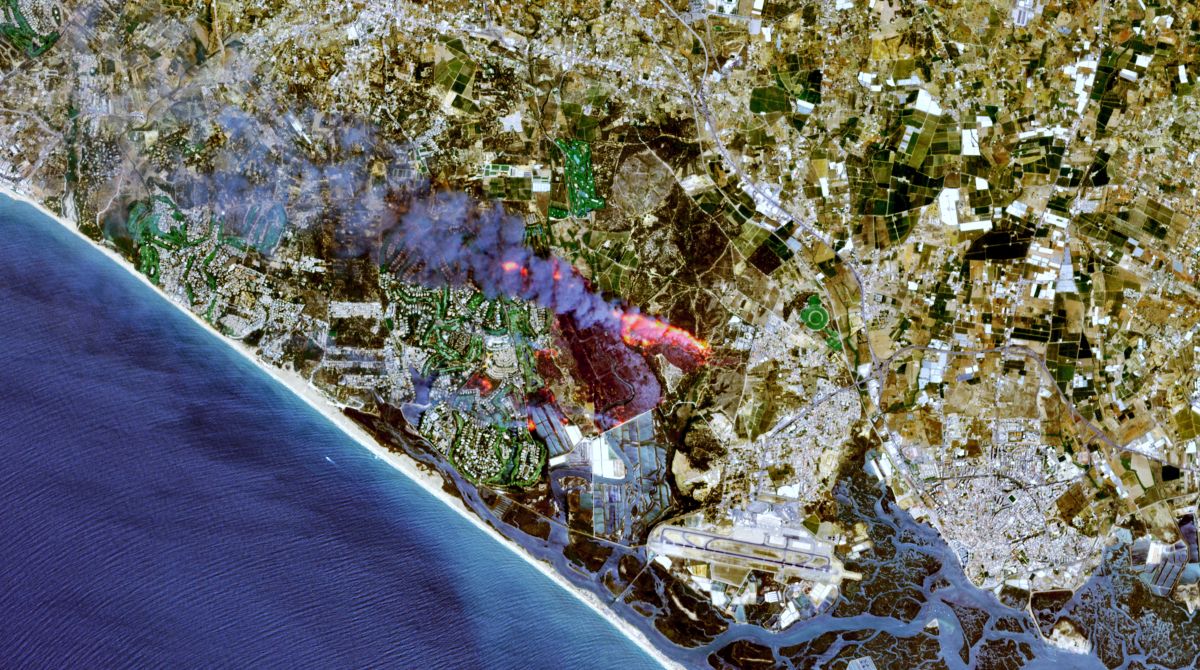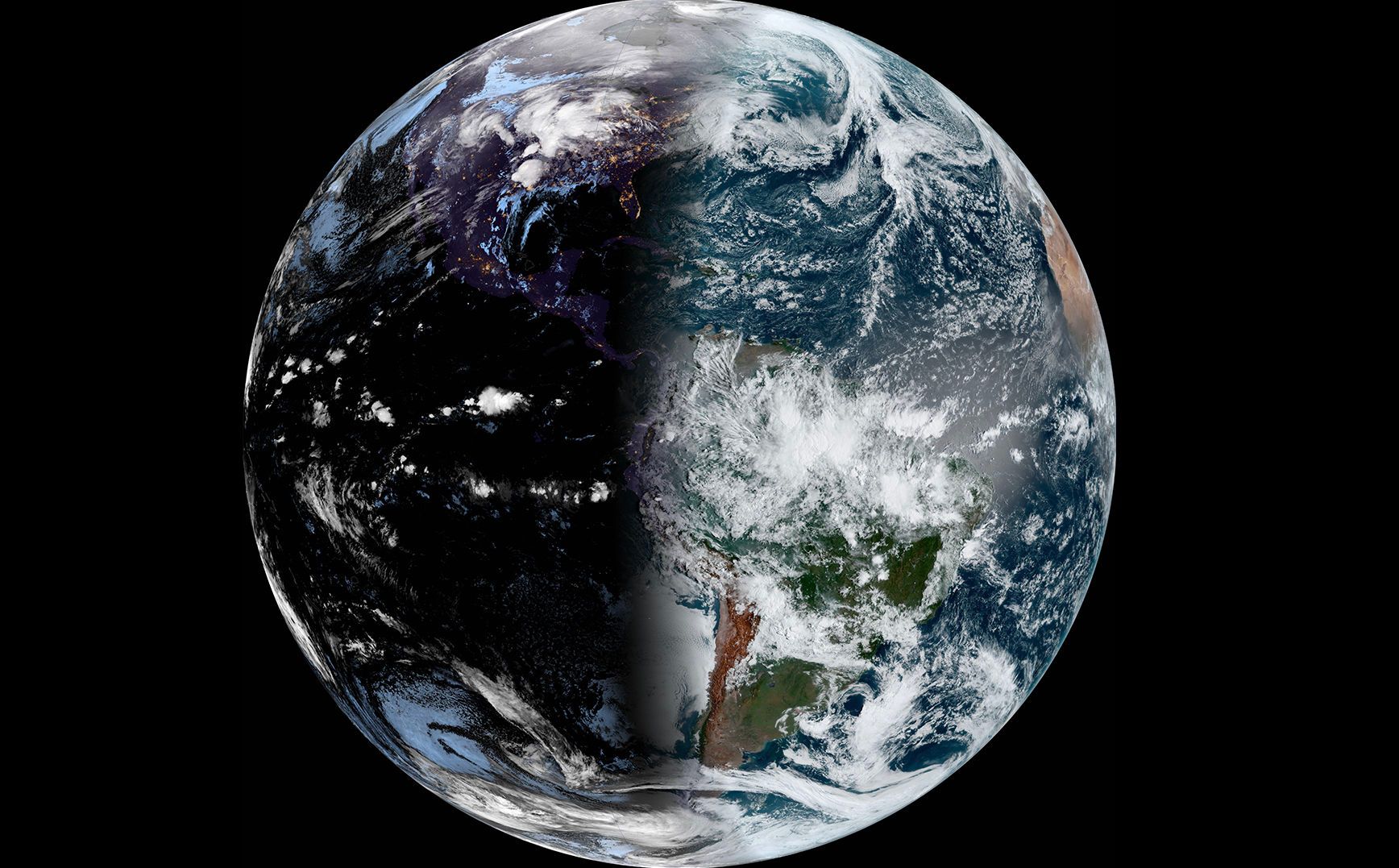Space Technologies Key to the EU's Fight Against Climate Change
Launched in March 2022, the Destination Earth initiative to create a digital model of the Earth confirms the importance of space technologies in the EU’s green and digital transformations. The consequences of climate change, such as droughts, fires, and floods, reduce the security of citizens and cause economic losses. The dissemination of applications using satellite data will increase the effectiveness of climate action and sustainable development in the EU.
 EU COPERNICUS SENTINEL-2/ Reuters/ FORUM
EU COPERNICUS SENTINEL-2/ Reuters/ FORUM
Climate Change Observation
As part of its space programme, the EU is developing systems to identify and monitor changes taking place on Earth. These systems produce large amounts of data that can be used by public and private entities, including local authorities, entrepreneurs, scientists, and individual recipients. The Copernicus observation system offers, for example, free access to information on current, past, and future climate changes through its C3S service. Sensors located in space and on Earth allow the collection of detailed data, including on air quality and emission levels, wind, water levels and salinity, forested areas, and temperatures. Galileo navigation is used, for example, to identify contaminated areas or iceberg trajectories. These systems already make it possible to observe and study climate change, but the method of data processing and sharing remains insufficient to meet the growing needs.
The EU is therefore planning to develop a digital model of the Earth as part of Destination Earth. The initiative is being implemented by the European Commission (EC) in cooperation with the European Space Agency (ESA), the European Centre for Medium-Range Weather Forecasts (ECMWF), and the European Organisation for the Exploitation of Meteorological Satellites (EUMETSAT). The so-called digital twin of our planet, thanks to the use of artificial intelligence and cloud computing, will share information obtained about the Earth in real time and combine it with simulations. This will enable the creation of more accurate models of interaction and the impact of human activity on the environment than ever before. Initially, the work will focus on two aspects. The first will concern threats caused by weather phenomena, such as floods and droughts, which is to help in crisis-response at the local level. The second will allow for large-scale adaptation to climate change or prevention measures, for example, in the field of carbon neutrality. In the first stage, the services will be available to the public sector, but the EC plans to expand the scope of users to include scientists, the private sector, and individuals. The Earth’s full digital twin, including more models, is expected to be completed by 2030.
Space Technologies and Quality of Life
Fighting climate change and adapting to it is important, above all, in urban areas, struggling with high levels of pollution and temperatures (the so-called urban heat islands). Currently, research using satellite data focuses on, among others, the optimisation of traffic and transport, which will allow, for example, to reduce fuel consumption and greenhouse gas emissions, as well as increase the road safety of users. The new services should offer models for economical driving, determined by the type of vehicle, traffic, and road conditions. It also will be important to create models for greening cities, which will allow for effective temperature reduction and water retention. In addition, the data offer new security tools, for example, product or data access keys based on geolocation, which can be used to track the transport of dangerous goods, among other things. In the future, space technologies will allow for better management of energy production from renewable sources thanks to more accurate weather models (wind speed and direction, insolation level, etc.), among others. Assessment of a power plant’s output power on the basis of such data can lead to more resilient systems and reduction of losses, which are estimated at about 10% of annual production.
Food security in the EU is another important area associated with climate change. Ensuring sufficient stocks becomes more difficult with the increasing frequency of extreme weather events, such as droughts that cause a decline in production, as well as rising costs, such as for fertilisers, which today are partly the result of the sanctions on Russia. One solution is using space technologies for the precise dosing of plant protection products, thus reducing their overall consumption while improving the quality of agricultural crops and groundwater. Food production is also associated with high methane emissions, which may be controlled by data obtained from satellites able to detect such sources and precisely assess the amount, allowing constant monitoring of the effectiveness of mitigation measures.
Thanks to satellite data, emergency services can respond faster and better in crises, such as fires and floods exacerbated by climate change, protecting not only people but also ecosystems. For this purpose, early warning services and satellite maps available on request from the Copernicus Emergency Management Service are used, as well as the Galileo Search and Rescue service, thanks to which it is possible not only to locate people in danger but also send a feedback signal to their transmitters, called Return Link Service, informing them that help is on the way (this increases the effectiveness of the rescue operation). Technologies are being developed for a portable transmitter the size of a watch, for example.
The Influence of Space Flights on the Climate
The rapidly expanding market for small satellites and the growing number of commercial launches may have a negative impact on the environment, although research in this area is still in progress. The amount of emissions depends on many factors, including rocket type and payload weight, and the harmfulness of the emitted substances—the height at which they are released, among other things. The fuel type that the rockets burn is of major significance, with some of them generating large amounts of carbon dioxide and other gasses. Only some are equipped with engines using liquid oxygen and hydrogen technology, which generates steam and leaves no significant carbon footprint (e.g., European Ariane 5 rocket). Besides, serious concern is raised by the fact that pollutants will also be released in higher layers of the atmosphere, where their removal (natural or artificial) will be difficult. In addition, the heat generated, among others, during the rocket return flight, contributes to the formation of nitrogen oxides, which have a greater impact on climate change than carbon dioxide. The level of oxides will also increase as the already significant amount of space debris de-orbits and burns up in the atmosphere. The EU does not yet monitor the scale of such emissions.
Conclusions and Perspectives
While most data from EU space systems is universally and freely available, using it in practice remains a major challenge. The market for space-based applications in the EU is growing rapidly but tackling climate change is generally a global issue. It is worthwhile for the EU, with the help of partners, such as the UN and the African Union, to promote solutions already available in the public sector, including building early warning systems and climate education, as well as the private sector, which would provide services tailored to local needs. The signing of an agreement between the EU Agency for the Space Programme (EUSPA) and the UN Office for Outer Space Affairs (UNOOSA) in March 2022 should be considered an important step. This can improve the implementation of the 2030 Agenda for Sustainable Development—space technologies play a significant role in 13 of its 17 goals. Due to the growing number of launches, it is also worthwhile for the EU to take initiatives to regulate them better to reduce their impact on the climate or to prioritise missions serving public and scientific purposes.
In the coming years, the development of applications using satellite data will be crucial for stable and environmentally friendly development in the EU. Their widespread use will support efforts to reduce the climate footprint and improve the living conditions of citizens. To this end, however, it will be crucial to attract greater attention from public authorities, including local ones, and business, which, thanks to space technologies, can lower the social and economic costs of the transformation towards climate neutrality. The Polish Space Agency is building, for example, the National Satellite Information System, which will provide access to a wide database of Earth observations. It would be worthwhile if the EU, despite the current economic difficulties, maintained spending on the development of space systems used to create the Earth’s digital twin, among other things. In 2026, for example, it is planned to supplement the Copernicus system with satellites that will monitor the amount of carbon dioxide released through human activity (CO2M mission).





